Pontsticill Reservoir
The Pontsticill Reservoir, also known as the Taf Fechan Reservoir is situated in the Brecon Beacons. It contains a bell-mouth overflow, which resembles a giant plughole. Watching water flow down this funnel is very hypnotic and the peaceful Taf Fechan Valley offers visitors wonderful opportunities to explore.
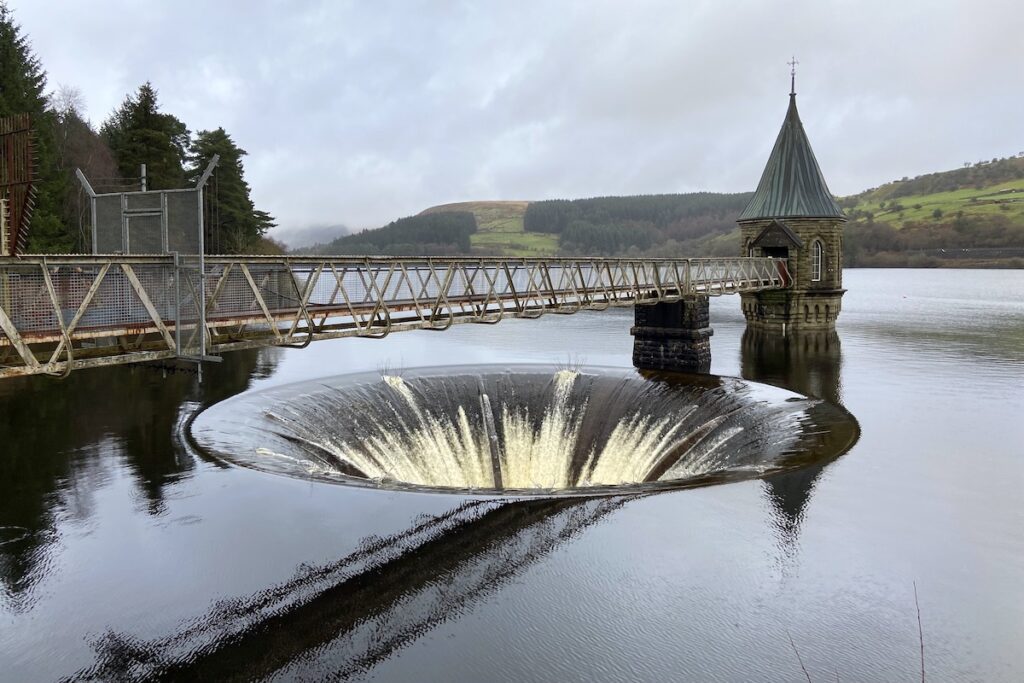
Key info
| Location | Pontsticill |
| County | Merthyr Tydfil County Borough & Powys |
| Completed | 1927 |
| Engineer | Sir Alexander Binnie, Son & Deacon & T. F. Harvey |
| Maintained by | Dŵr Cymru Welsh Water |
| Heritage category | Listed Building Grade II (valve tower, dam, filter & turbine houses) |
Visiting guide
Open 24 / 7
Free entry
Free street parking
Birdwatching
Fishing
Water sports
What can I expect when visiting Pontsticill Reservoir?
The optimum starting point is the southwest corner of the reservoir. If you are tall enough, you can pop your head over the dam wall to view the valve tower and overflow funnel, which looks like a gigantic plughole.
Walk underneath the parking barrier where you will find some steps that offer a more accessible vantage point to view the overflow and the tower.
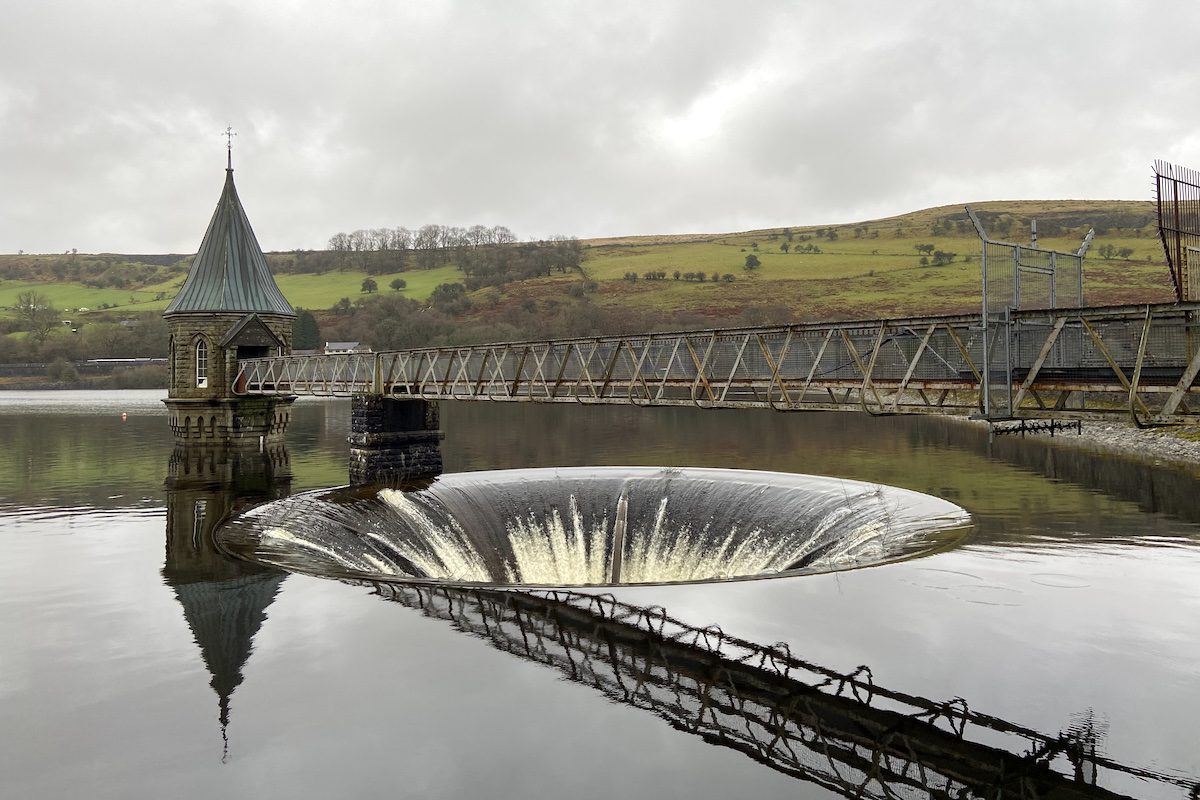
Unfortunately, the bridge that leads to the valve tower is locked, wouldn’t it be a fantastic experience to view the overflow funnel from above?
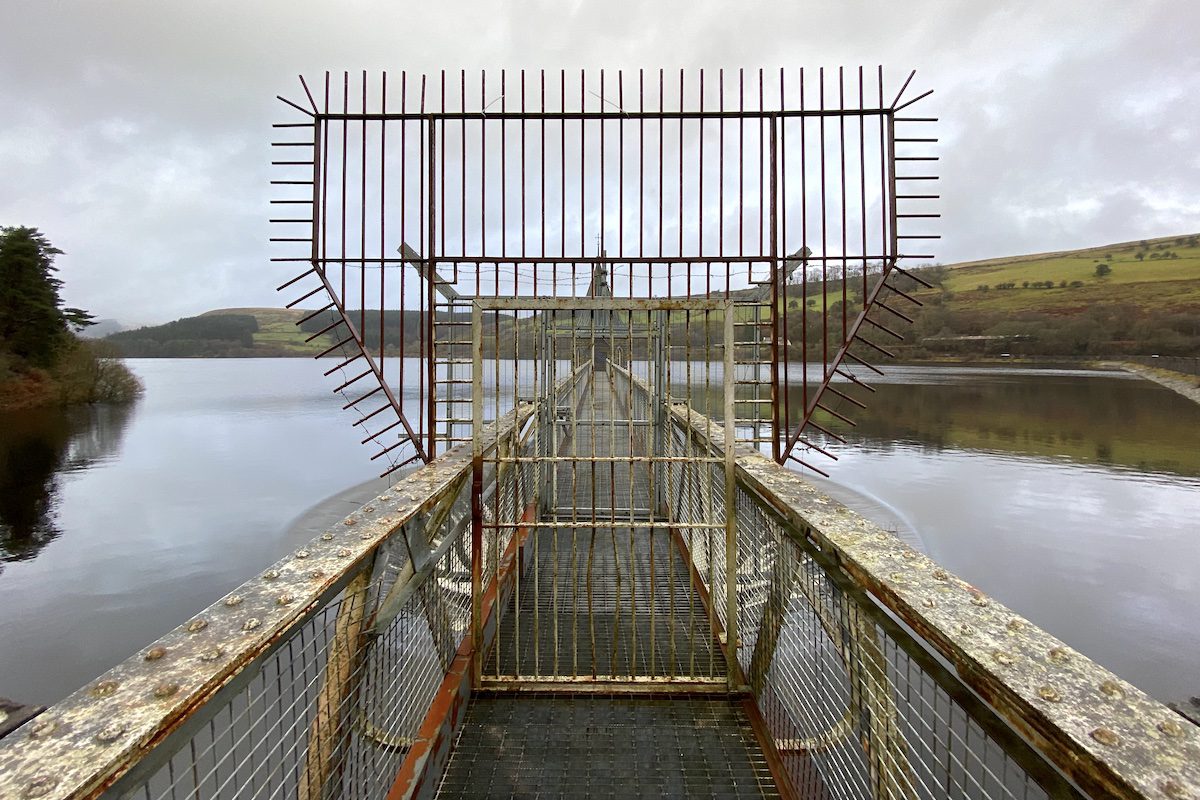
Once you have spent enough time viewing the overflow, head down the path along the dam.
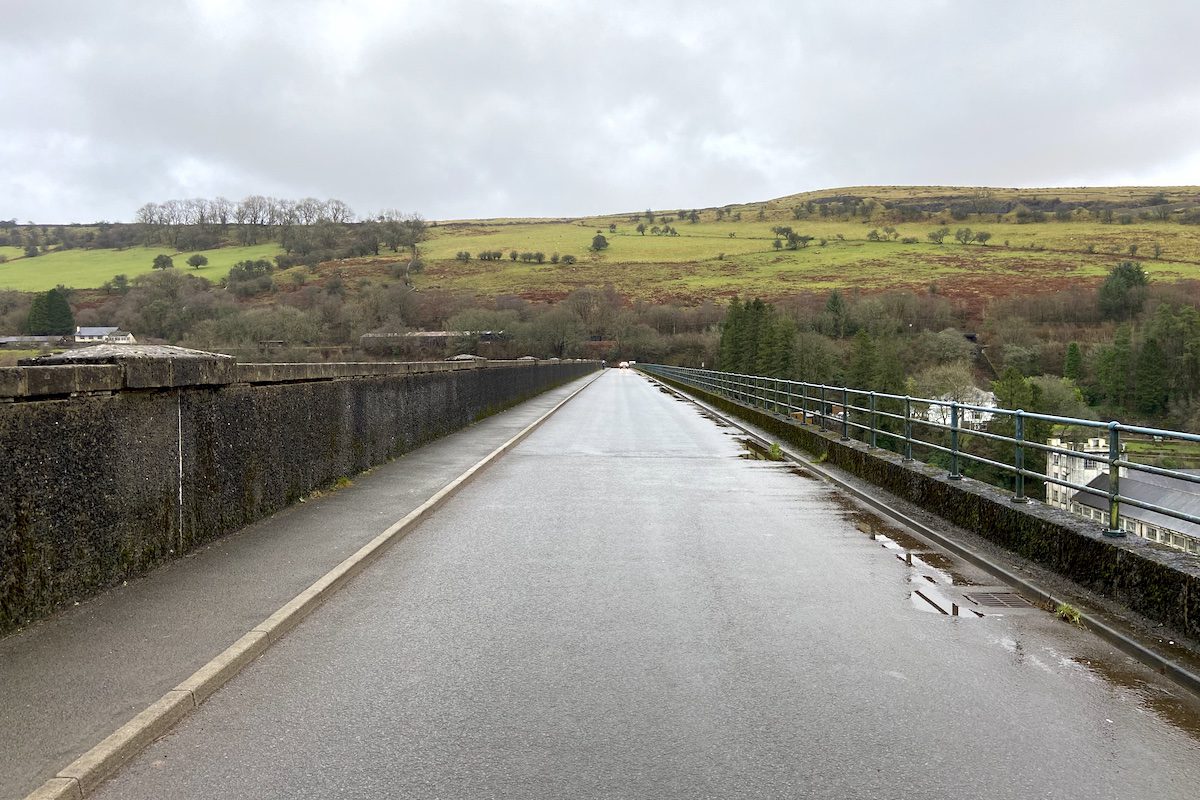
You will get a fantastic view of the waterworks. The buildings are quite decorative with mock castle towers, one of which is domed.
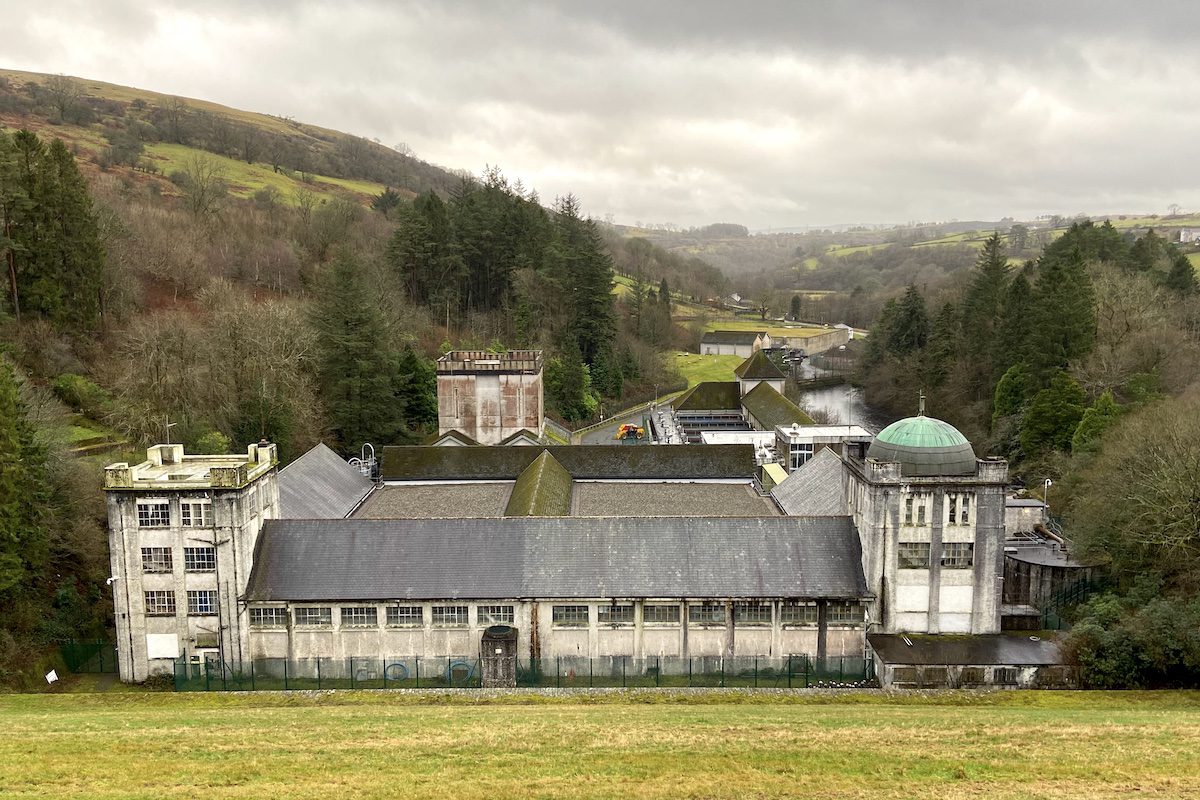
Continue along the dam to the east bank, where you can enjoy the view of the valve tower in the distance.
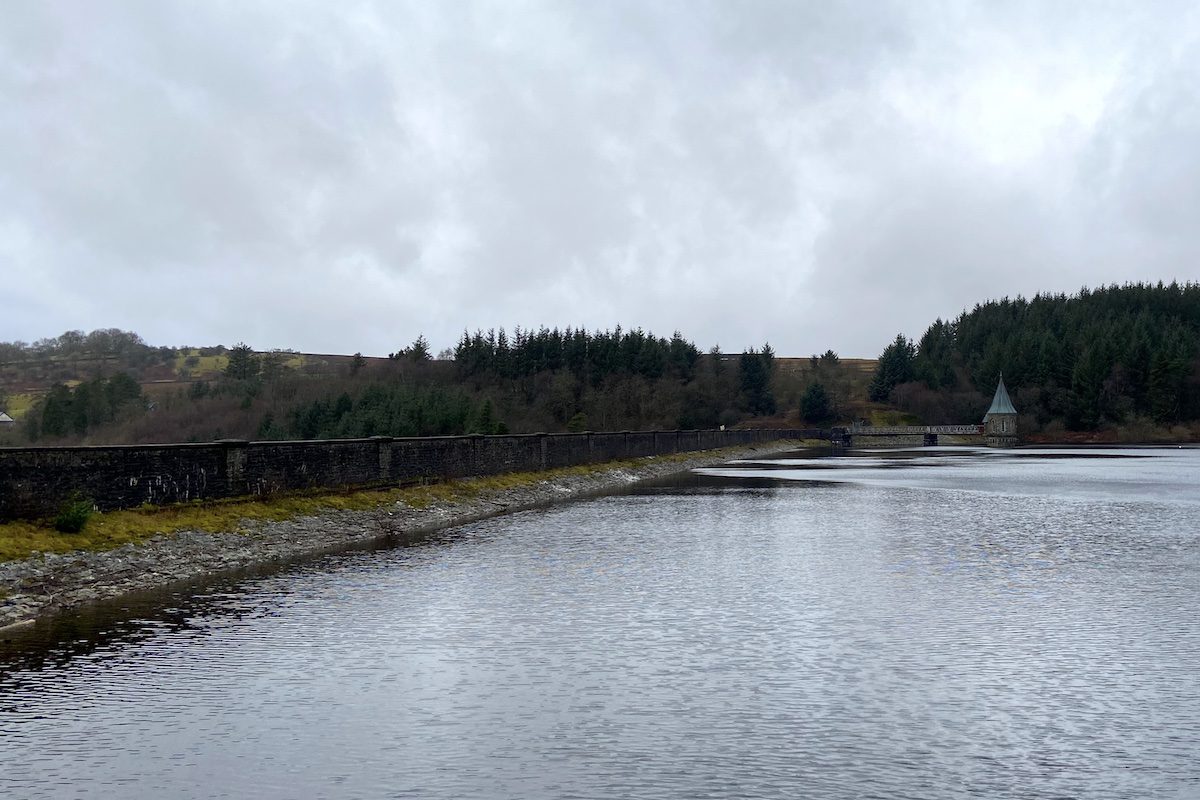
You now have the option to continue up the east bank alongside the Brecon Mountain Railway where you will arrive at a fork in the road. The right road leads to the Brecon Mountain Railway Steam Museum. Train services do not stop here so this is the only accessible entrance. Continue along the left road if you wish to continue along the reservoir.

Continue along the road until you reach a level crossing. Keep following the road to the left. You will then arrive at another barrier that leads to Merthyr Tydfil Sailing Club. Take the path to the right that follows the railway line.

The path will take you up to the northern bank of the Pontsticill Reservoir. An embankment separates the reservoir from its older counterpart, a smaller body of water originally called Pen-twyn Reservoir or Dolygaer Reservoir. A bridge crosses an outlet where water flows into Pontsticill Reservoir, the original valve control still exists.
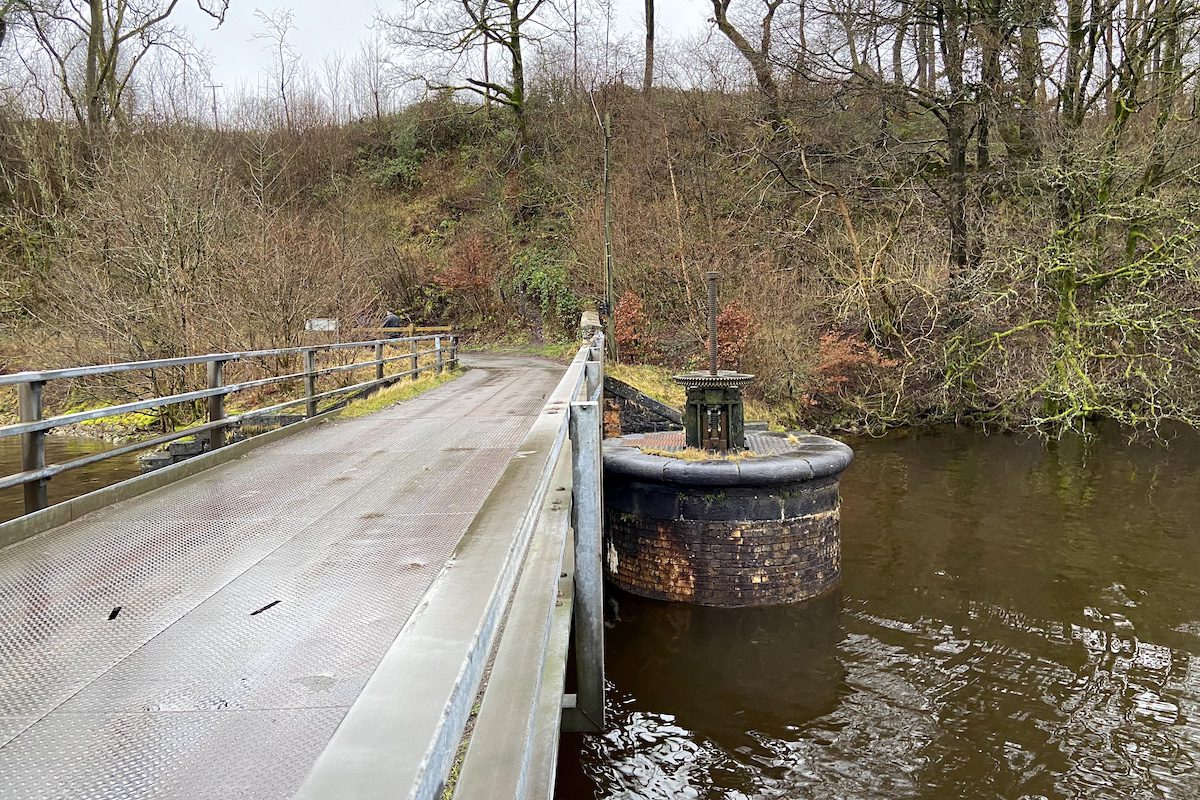
This is a popular fishing spot; we even witnessed a group catching a gigantic pike.
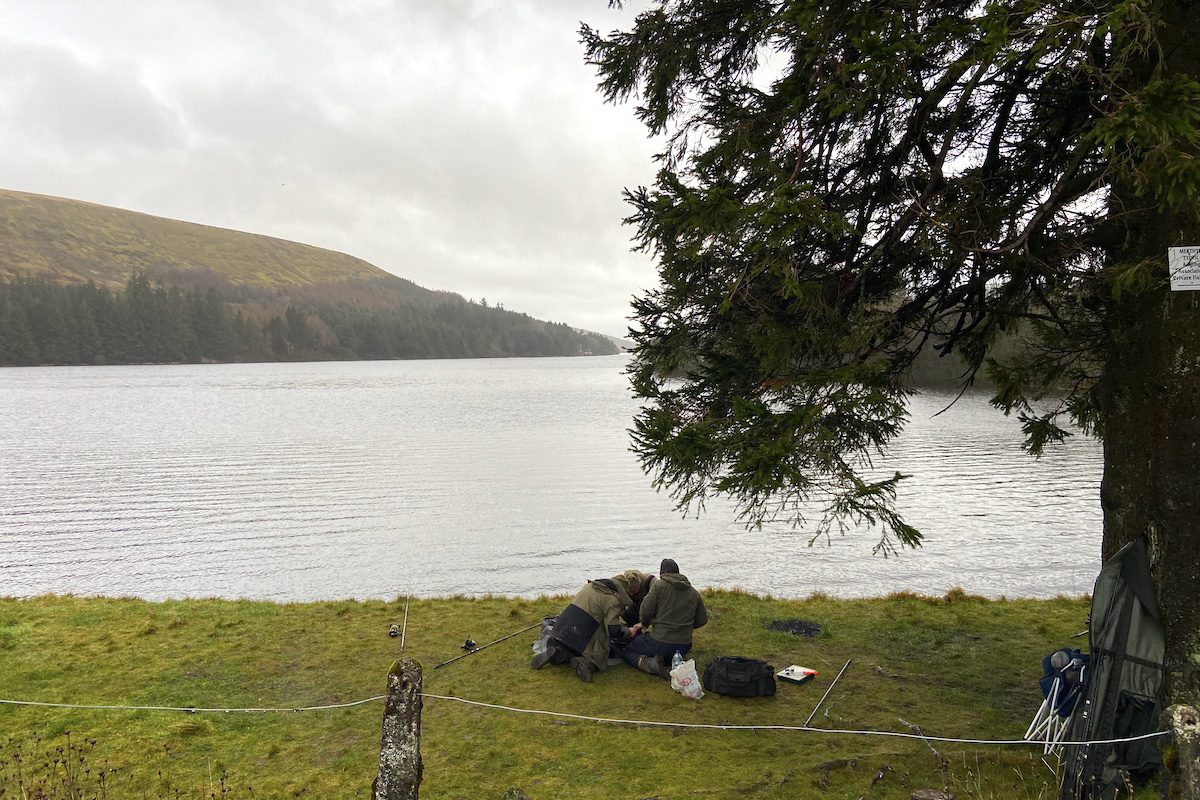
You now have the option to continue exploring the area. If you wish to head back to the start, you can take the road running on the west bank. If you would prefer to avoid cars, then head back the way you came along the Brecon Mountain Railway.
How long does it take to see the Pontsticill Reservoir?
It will take you roughly 20 minutes to see the valve tower, overflow funnel and walk along the dam and back. It will take you around 2 hours to walk a return journey from the dam to the embankment between the Ponsticill and Pen-twyn reservoirs.
Can you fish at Pontsticill Reservoir?
Yes you can fish at Pontsticill Reservoir providing you have a membership with the Merthyr Tydfil Angling Alliance.
The reservoirs of Pontsticill and Dolygaer are well stocked with bream, skimmers, roach, perch, and pike. The occasional carp and large double figure carp have been seen.
What additional activities does Pontsticill Reservoir offer?
The Merthyr Tydfil Sailing Club offers dinghy sailing and windsurfing.
Is Pontsticill Reservoir suitable for a picnic?
There is no suitable picnic spot at the valve tower near the dam; however, there are plenty of beautiful spots along the east bank.
How do I get to Pontsticill Reservoir?
The reservoir is remotely located in the Brecon Beacons, so a car is the best way to travel. There is a small layby on the western end of the dam near the valve tower, which has enough room for two parked cars. If the layby is full, park on the road running over the dam, there are no restrictions.
History of Ponsticill Reservoir
1863 – The Pen-twyn Reservoir (also called the Dol-y-Gaer Reservoir) is completed. After some years, a persistent leak was discovered because the embankment was constructed across a geological fault despite the consulting engineer being the eminent Thomas Hawkesley. This is the reason why the Ponsticill Reservoir was proposed to impound the leakage.
1911 – An Act of Parliament is passed granting the Merthyr Corporation to let a contract out to Sir Robert McAlpine & Sons for the construction of a reservoir using an earth embankment at a cost of £232,000 (£28 million in 2020).
1913 – Repairs were carried out on the Pen-twyn Reservoir, which reduced the daily loss of water leakage from 11 million gallons to 2 million.
1917 – Construction starts on the Ponsticill Reservoir, which included the construction of a 3ft narrow gauge railway to assist with the movement of labour and materials; however, the outbreak of the First World War halted all work.
1922 – Work resumes after a new Act was passed the previous year. The reservoir became known as the ‘Taf Fechan Reservoir’ after the formation of the Taf Fechan Water Supply Board, which embraced several other local water boards. Tom Powell, a workman, is killed after a clay wagon became detached from its rope. Safety chains were installed after this tragedy.
1923 – Various temporary buildings used for the construction project are demolished and replaced with new structures. The workshops were situated below the dam site near the outlet from the tunnel under the dam.
1925 – Sir Robert McAlpine & Sons are paid an additional amount of £120,00 (£7.46 million in 2020) after five years of legal action and negotiations. Some 360 to 380 men are now at work on the reservoir.
1926 – Work is temporarily halted in May due to the General Strike.
1927 – The reservoir is completed and opened on 21st July with 450 guests in attendance. It is of interest to note parts of the Merthyr Tramroad were discovered when excavating the associated pipeline near Abercynon. The find included 3ft long cast iron plates still attached to their stone sleeper blocks. The Board presented the rails to the Merthyr Tydfil Museum at Cyfarthfa Castle and the National Museum of Wales at Cardiff. A pipeline is also laid to Cardiff [2].
Architecture & dimensions
The dam has a clay core and earth bund construction with pitched stone revetment to the inner face of the embankment. The full-length stone wall above has an inner face of sloping earth bank and a low stone wall supporting the roadway above.
The valve tower was constructed using rock-faced coursed stone with a copper-sheet spire. Its gothic style octagonal tower rises from the water on an octagonal base. The lower masonry is corbelled out on stepped corbels with pointed arches between. The tower has narrow lancets on other sides with stone voussoirs and hoodmoulds, plus stepped eaves. The tall octagonal roof has two pitches, clad in copper sheet with iron vane.
The steel lattice bridge runs from the west side of the reservoir to the abutment at the valve tower door and is carried by one stone pier with blockwork above.
The abutment on land has walls of rock-faced stone. The outflow is a convex-sided large funnel in the reservoir below the bridge with concrete ribs and lining of brick or stone [1].
Sources
- Cadw (2021) Full Report for Listed Buildings. Available at: https://cadwpublic-api.azurewebsites.net/reports/listedbuilding/FullReport?lang=&id=87640 (Accessed: 1 January 2022).
- Bowtell, H. D. and Hill, G. (2006) Reservoir Builders of South Wales. Rayleigh: Industrial Locomotive Society.

 Leapgate Old Railway
Leapgate Old Railway